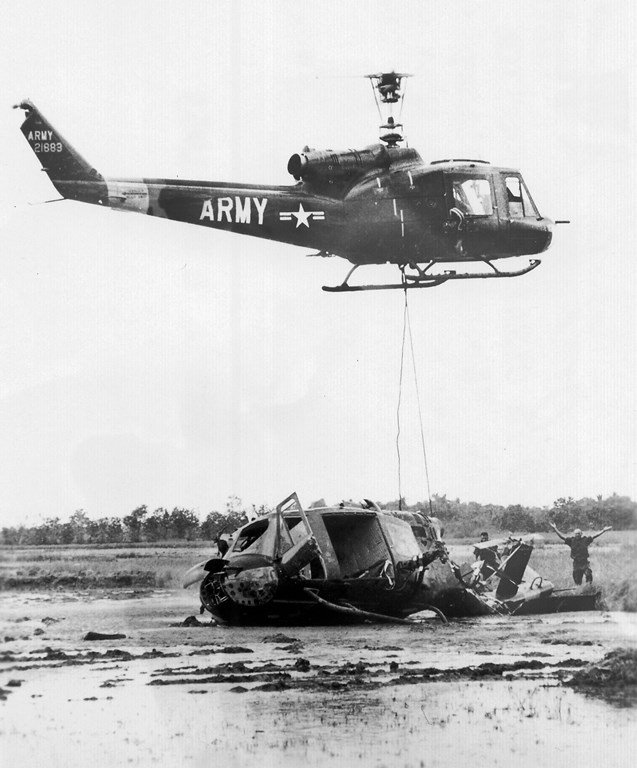Battle Of Ap Bac
January 2, 1963

Elements of the South Vietnamese 7th Infantry Division engage a smaller Viet Cong force outside the village of Ap Bac, 40 miles southwest of Saigon, in the Mekong Delta. The South Vietnamese force commits numerous mistakes, and the Viet Cong troops, holding strong defensive positions, kill 63 and wound 100 South Vietnamese soldiers. Estimates of Viet Cong casualties vary. The enemy guerrilla forces also shoot down five American helicopters before successfully escaping the battlefield. Three Americans are killed in action. It is the first major South Vietnamese defeat after some notable victories in late 1962.1
The battle of Ap Bac was by itself a relatively minor skirmish. In this battle, several battalions of South Vietnamese forces—overseen by American advisers, outfitted with armored personnel carriers, and transported by helicopters—failed to dislodge several hundred entrenched Viet Cong troops, who later fled under the cover of darkness. Magnified by the American journalists who witnessed the battle, the political consequences of this engagement proved portentous for all three of the belligerents involved.
The Viet Cong demonstrated that its guerrillas could hold ground against superior American military technology. American-trained South Vietnamese officers repeatedly failed to take the initiative and counterattack the numerically inferior insurgents. And United States Army advisers expressed frustrations with the quality of the South Vietnamese military leadership and voiced doubts to the American press over the use of conventional military tactics against guerrillas after this engagement. Adding to the public controversy that played out in the press, high-ranking American commanders declared Ap Bac a victory for the South Vietnamese because the Viet Cong forces abandoned their positions. Consequently, historians argue that the minor skirmish of Ap Bac became one of the first moments when members of the American military and press began to question openly the direction of the war and doubt the government of South Vietnam’s ability to end the insurgency using conventional military forces and strategy.
Where scholars’ opinions split, however, is in whether American military advisers and reporters correctly understood why Ap Bac ended in disappointment. Conventional views fault the Diem regime for basing officers’ promotions on political loyalty rather than merit. Revisionist historians counter by directing the blame at American military advisers who mishandled the preparations for and execution of the battle plans, and who then covered up their mistakes in misleading after-action reports to the media. Either way, the battle of Ap Bac provided one of many reasons the United States lost confidence in South Vietnamese President Ngo Dinh Diem’s leadership, encouraging his overthrow in 1963 and leading to the dispatch of large numbers of American combat forces to South Vietnam beginning in 1965.
Hess, Gary R. Vietnam: Explaining America’s Lost War. Malden, MA: Blackwell Publishing, 2009.
Krepinevich, Andrew F. The Army and Vietnam. Baltimore: The Johns Hopkins University Press, 1986.
Moyar, Mark. Triumph Forsaken: The Vietnam War, 1954-1965. New York: Cambridge University Press, 2006.
Toczek, David. The Battle of Ap Bac: They Did Everything But Learn From It. Annapolis: Naval Institute Press, 2001.
Sheehan, Neil. A Bright Shining Lie: John Paul Vann and America in Vietnam. New York: Vintage Books, 1989.